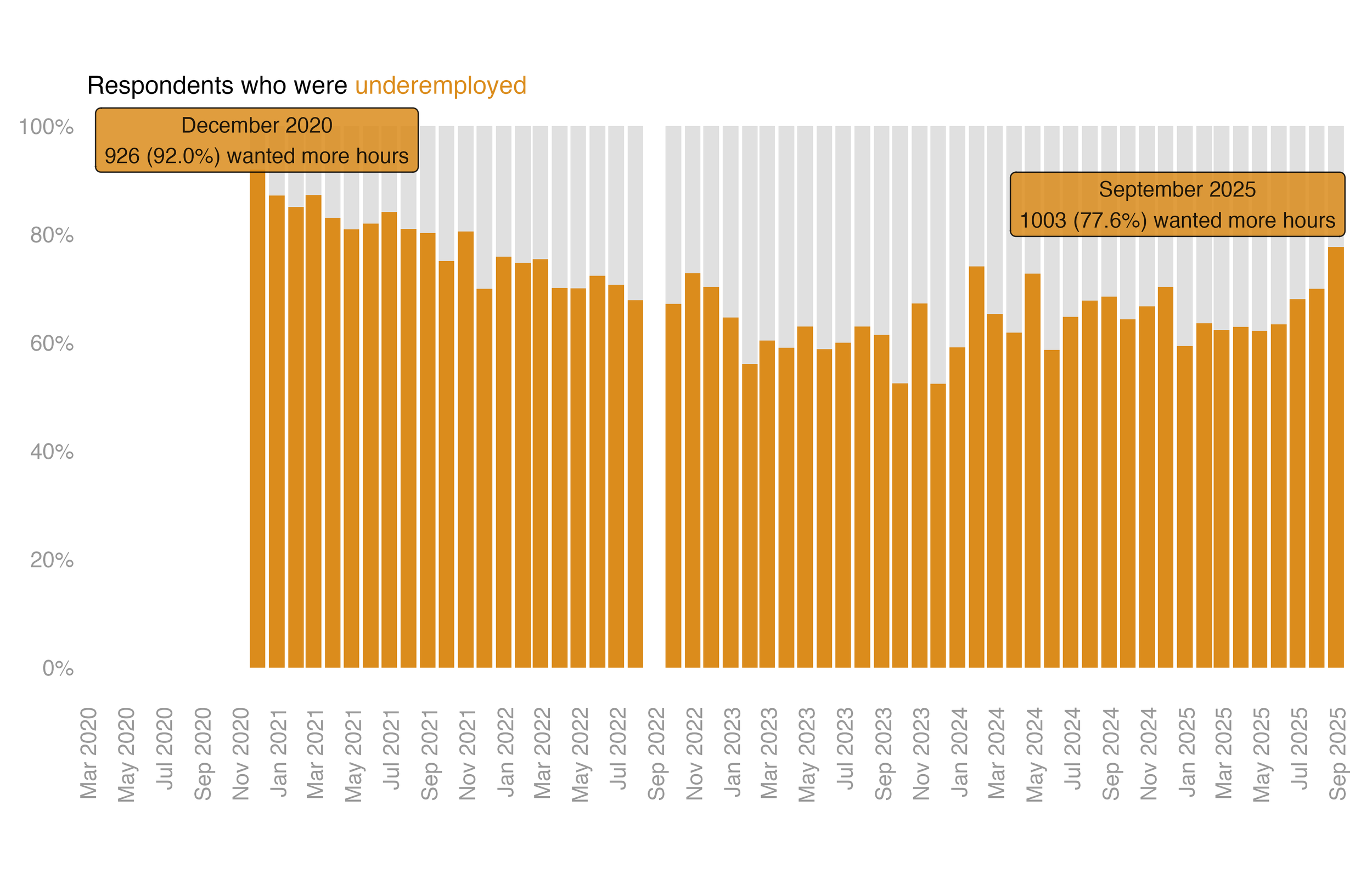La Alianza Domestic Worker Surveys - Quarterly Report
ECONOMIC SECURITY & UNDEREMPLOYMENT
domestic worker economic and labor conditions approach all-time low since 2020
October 2025
The National Domestic Workers Alliance (NDWA) began surveying Spanish-speaking domestic workers in March 2020 to better understand how the COVID-19 pandemic was affecting their livelihood. Since then, over 35,000 domestic workers have completed weekly and biweekly surveys, allowing NDWA to track employment and economic trends over time.
From July to September 2025, domestic workers reported worsening economic and labor conditions across multiple metrics. In September alone, participants experienced levels of economic insecurity on par with the worst ever reported, as well as the highest levels of underemployment in years.
These findings underscore what NDWA organizers have been hearing from workers for months: amidst growing economic uncertainty, high grocery bills, increased attacks on immigrant communities, and threatened labor protections for home care workers, the domestic workforce is facing mounting and urgent challenges that demand attention and action.
Economic Security
Two-thirds of respondents (67%) did not pay their rent or mortgage on time in September 2025. This is on par with the highest level of housing insecurity ever recorded through the La Alianza surveys, and much higher than recent months (e.g., 44-52% in January-June 2025).
When asked to describe food security in their household, 91% said food was sometimes or often scarce in September 2025. This resembles the highest levels of food insecurity reported over the past five years.
Finally, 71% of domestic worker respondents in September 2025 found it somewhat or very difficult to pay for regular household expenses, including food, rent, car payments, and medical costs. Prior to this quarter, the proportion of domestic workers reporting difficulty paying for household expenses had not surpassed 58% since the question was introduced in April 2022.
Employment
Domestic workers faced both falling wages and shrinking hours in the third quarter of 2025. Hourly wages dipped between July and September, with 50% of respondents making $14 or less per hour compared to 44% and 46% in the first and second quarters of 2025, respectively.
At the same time, workers struggled to find enough hours. Nearly half (45%) of all respondents worked 1-20 hours per week, while another 21% reported no work at all. By September 2025, when asked to describe their workload, 78% of respondents wanted more work hours, the highest level of underemployment reported since November 2021 (81% underemployed).
Why This Matters
Findings from this quarter reveal a rapid deterioration of economic recovery for domestic workers since the COVID-19 pandemic and increased difficulty finding work. Particularly notable is how 26% of workers did not feel safe looking for work in September. These survey findings suggest that domestic workers are grappling with both intense economic pressures and mounting, novel barriers to finding adequate employment.
To learn more about NDWA’s La Alianza survey of Spanish-speaking domestic workers, see this methodology report.


